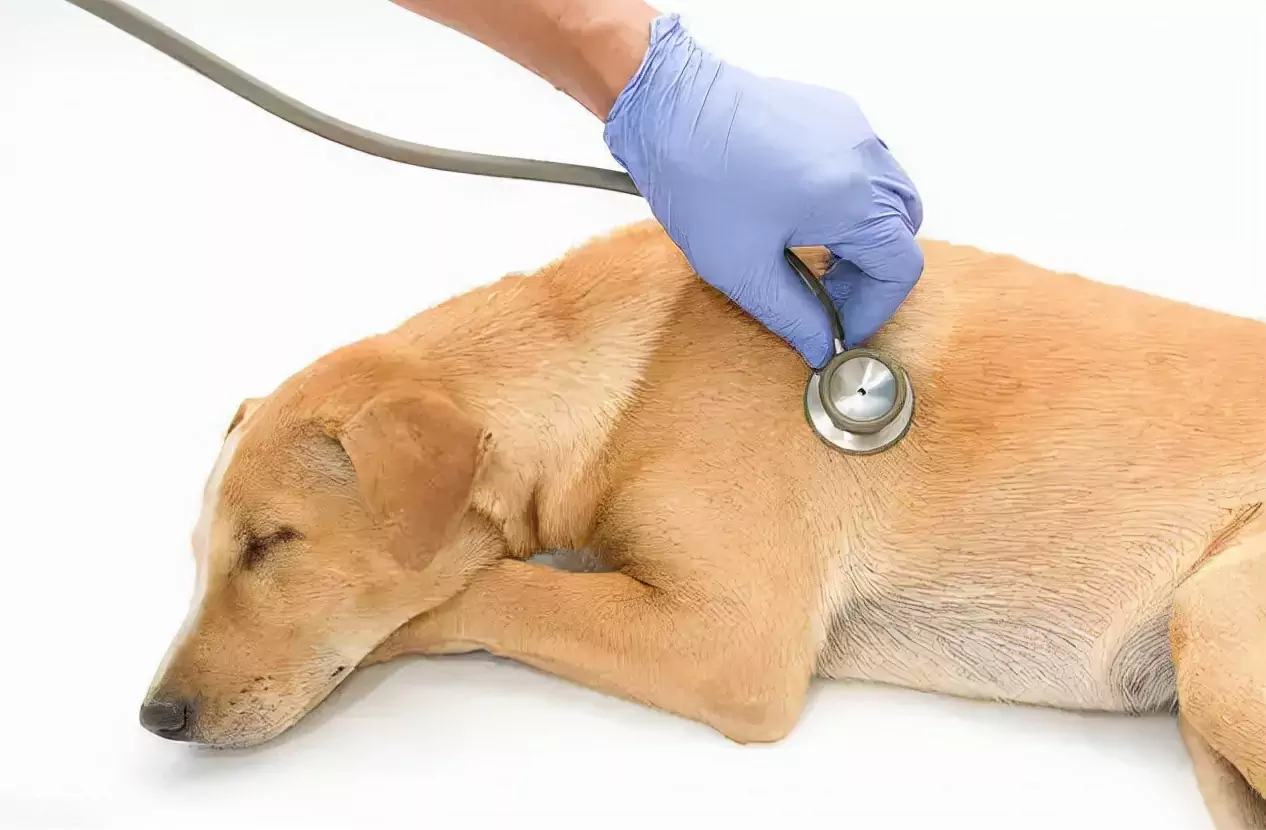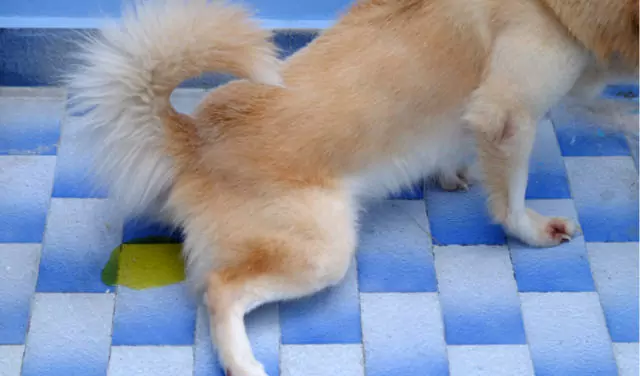What is the canine macro virus? Symptoms of canine microcephaly? How can I prevent microcephaly?
2022-06-22
I'm sure none of you are unfamiliar with the virus, but it is a serious and highly contagious pet virus that affects most dogs, especially puppies. It is also one of the most likely viruses to cause death in a dog's puppyhood, so budding pooper scoopers must pay attention when buying and caring for a dog!
I. What is microcephaly?
Canine microcephaly is a virus that causes severe diarrhea, vomiting, and lethargy in dogs. It is not contagious to humans, but can easily be transmitted to pets in the same litter. If you think your dog has symptoms of microcephaly, contact your veterinarian immediately for early treatment and recovery.
II. Symptoms of canine microcephaly
The macro virus is so insidious because it attacks cells in the animal's bone marrow and intestines. Once the bone marrow is affected, the animal's white blood cell count drops, which increases the risk of infection. The immune system begins to shut down. When the intestinal cells are affected, the lining of the intestine becomes damaged and the body is no longer able to absorb nutrients or properly digest food. Symptoms are nausea, vomiting, and severe diarrhea. This diarrhea is usually offensive smelling like blood.
When this disease takes a toll on the body, the dog becomes extremely weak and dehydrated. Dogs may develop sepsis, a bloodstream infection that can occur when the intestinal wall fails to act as a barrier against bacteria. Sadly, many dogs will not survive, so early detection and timely vaccination is the best way to prevent this disease. Not all dogs carrying the macro virus will develop severe symptoms. In some cases, adult dogs may present with mild symptoms.
Initial stages of microcephaly
Affected dogs start with no energy and no food, then suddenly vomit and diarrhea, dogs have a temperature as high as 39.5 to 41 degrees Celsius, loss of appetite, depression, watery discharge from the eyes and nose, sneezing, diarrhea, and a gradual increase in the number and volume of bowel movements.
The middle stage of microcephaly
The dog will discharge jelly-like mucus and blood stool, pink to brownish red, the stool is more dilute than before, fishier; vomit more than, eat what vomit, sometimes the vomit is light red; the affected dog is a poor spirit like to lie down, love to drink water.
Late-stage of microcephaly
Very poor spirit, tired, unresponsive, sunken eyes, coarse back hair, poor skin elasticity, dry mouth, dry nasal mirror and a layer of white covering on the nasal mirror; cold extremity endings, limb weakness, more lying down, lethargic, showing signs of dehydration; gastrointestinal peristaltic sounds weakened, accelerated heart rate, accelerated breathing, sometimes you can smell the sick dog exhaled odor is sour; vomiting and diarrhea heavy, vomit and diarrhea are bright red, visible mucous membrane pale; Urine yellow, sometimes little or nothing, tested with pH paper, urine is strongly acidic, that is, acidosis.
Causes of microscopic disease
The most common cause of the microscopic disease is a puppy that has not been vaccinated and becomes susceptible to the disease. A dog with a compromised immune system is also at risk for microcephaly. A dog can become infected with the canine micro virus after being exposed to the virus, which enters the dog's system through the mouth. Then, it takes about three to seven days for the virus to become active in the body.
Within a few days, the virus will begin to be excreted from the puppy's feces. At this point, it can affect other dogs, although symptoms usually do not appear until a few more days later. The virus continues to be excreted from the pet's body during the dog's illness and for several weeks after recovery.
The macro virus is stable in the environment for a long time. Your shoes can easily pick up the virus and transport it to other areas. Dogs do not necessarily need to come into direct contact with feces to contract the micro virus. Particles of the macro virus can survive in an outdoor environment for five to seven months, and even longer in cold climates, which is why, after having a dog with microcephaly, it needs to be sterilized for six months before you can get a new puppy.
Diagnosis
The dog's history and symptoms play a large role in the diagnosis of microcephaly, but the final diagnosis will be made through test strips, which vary from one diagnosis to another. Microcephaly is a test of the dog's stool, which is then placed on a test card, and the results will appear in less than ten minutes.
If the fine test is positive, your veterinarian will likely recommend further testing to assess the damage caused by this disease to blood cells and organs. The sooner your dog is evaluated by your veterinarian, the better his chances of recovery.
Treatment
Unfortunately, there is no complete cure and it requires early detection and some money, which includes hospitalization and intensive care. Home care is usually ineffective for dogs that are already severely ill. General treatment will involve the following.
Intravenous fluids
Antibiotics to prevent sepsis
Anti-nausea medication or anti-nausea medication
Prevention of further damage to the stomach lining and esophagus due to nausea and vomiting
Deworming. This is because the presence of intestinal parasites can increase the damage caused by microsomia and prevent recovery
What is canine microcephaly? What are the symptoms of canine microcephaly? How new pooper scoopers should prevent canine microcephaly
Depending on the dog's condition and your veterinarian's professional opinion, your veterinarian may recommend alternative treatments. These may include anti-inflammatory medications, anti-viral medications, plasma transfusions, etc. If your dog is being treated for the micro virus, he may face hospitalization. Microcephaly is not well treated, so the cost of treatment is not too cheap, probably hundreds to thousands of dollars, and the survival rate for dogs is usually about 70-80%, provided you find it early and treat it.
What is canine microcephaly? What are the symptoms of canine microcephaly? How new pooper scoopers should prevent canine microcephaly
Your dog has gotten a little better with treatment, and while treatment is still pending, your veterinarian may suggest that you put him on anti-diarrheal medication for a few days. Your dog's stool may still be very loose for the first few days as his intestines slowly heal and he slowly gets ready to eat. Do not give him heavy food at this time, but more light food.
Fortunately, once fully recovered, a finicky dog will not have any lingering health problems. When a dog recovers from fine, it will be much more immune than the average puppy and may even be immune for life.

Three: How to prevent microcephaly
Because the macro virus is a deadly and contagious disease, prevention is crucial. Here's how to protect your puppy from the effects of microcephaly.
Get vaccinated on time. Take your dog for regular vaccinations, as well as talk to your veterinarian about his recent health condition and report any signs of illness promptly.
Don't take an unvaccinated puppy out in public until a week after it has been vaccinated, and then take it out to get to know the world. A puppy's immunity is unknown until 16 weeks, and vaccine-induced immunity is not fully effective until 5 to 10 days after vaccination.
What is canine microcephaly? What are the symptoms of canine microcephaly? How new pooper scoopers should prevent canine microcephaly
Because the virus is highly contagious to other dogs, steps must be taken to disinfect contaminated areas that have been used at any time by a dog with microcephaly. Even if a dog with microcephaly has been in an area for a short period and has not defecated there, you must disinfect the area of contamination. Remember, the microscopic virus can remain on a dog's paws and fur and spread in this way.
In a vet hospital, a tiny dog will be isolated and the hospital staff will clean that area where he stays with a special disinfectant known to kill the tiny virus. Generally speaking, the tiny virus will not live indoors for more than a month or so, but you should still make sure to clean the area thoroughly. Soiled bedding should be thrown away, and all of its used items need to be cleaned up as well.
Depending on conditions, the macro virus can live outside in cold temperatures for five to seven months. If an unvaccinated puppy is living in your home, it should be isolated at your friend's house or in a room that the sick dog has never been in or touched for at least a month, and the home needs to be disinfected inside and out.
#
Virus
#parvovirus
#symptoms
#veterinary
#vaccination
#diarrhea
#treatment
#feces
#this disease
#intestines
Was this article helpful to you?
Other links in this article
English:
What is the canine macro virus? Symptoms of canine microcephaly? How can I prevent microcephaly?
Nederlands:
Wat is het canine macro virus? Symptomen van canine microcefalie? Hoe kan ik microcefalie voorkomen?
português (Brasil):
O que é o macro vírus canino? Sintomas de microcefalia canina? Como posso prevenir a microcefalia?
Comments

Why is my dog throwing up?

Why does my dog keep coughing?

How many months is a dog pregnant? Signs and Phenomena of Dog Pregnancy

How do dogs grow fleas? Ways to get rid of fleas on dogs

Can dogs get diabetes?

Can dogs be depressed?

Why does my dog keep sneezing? Causes of Sneezing in Dogs

Can dogs catch a cold? Cold and Flu Symptoms in Dogs

What causes heart disease in dogs

Can dogs get urinary tract infections?










